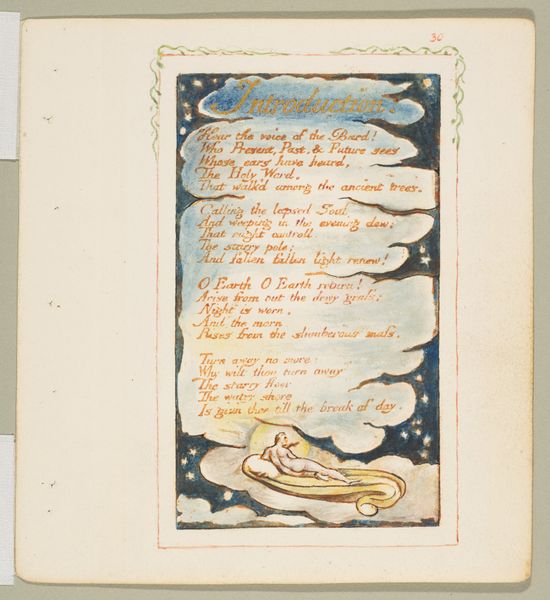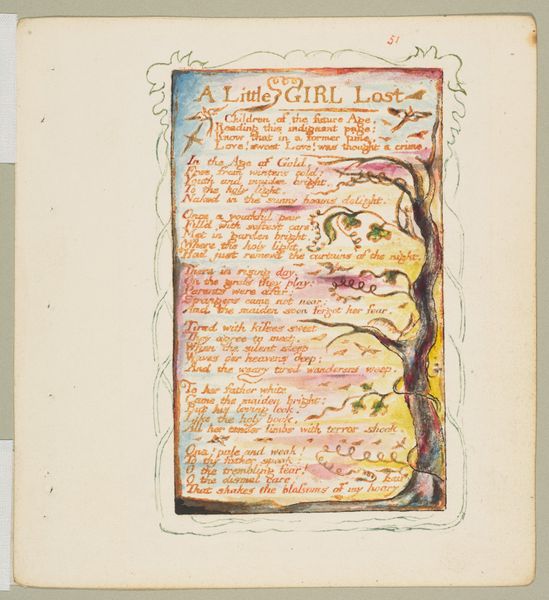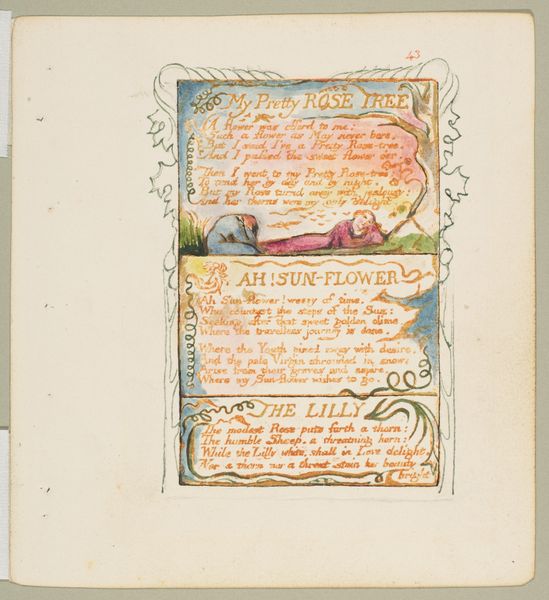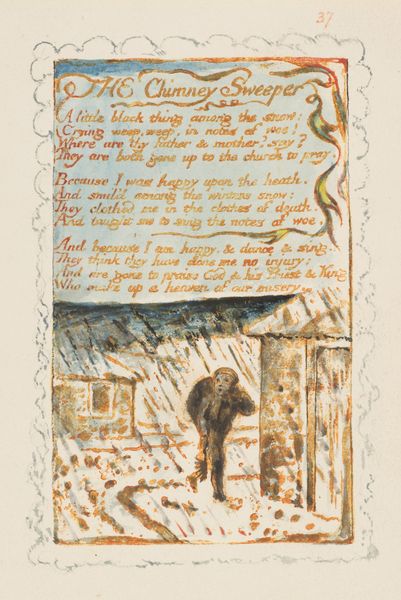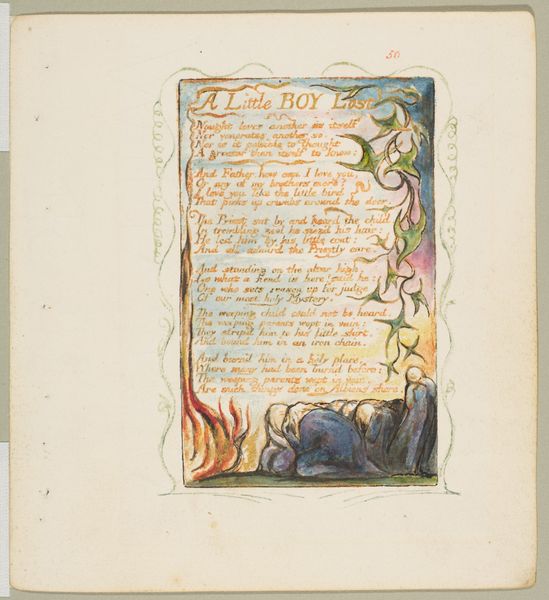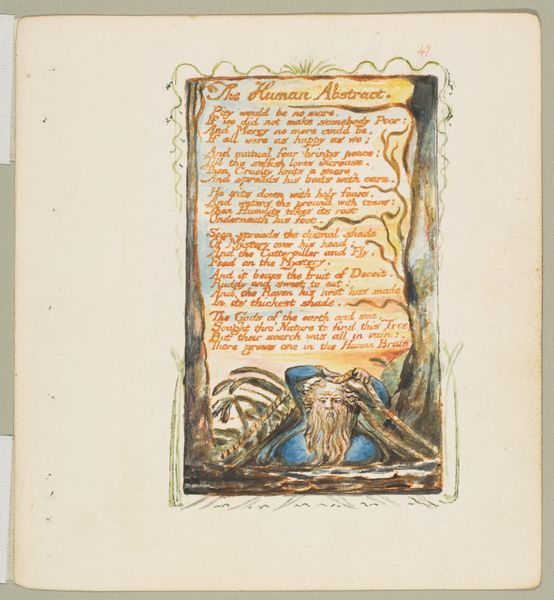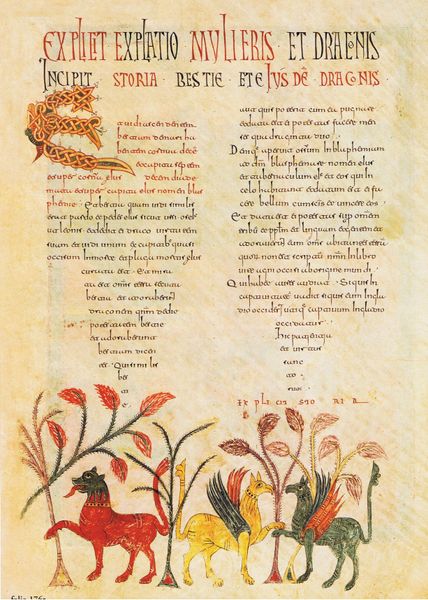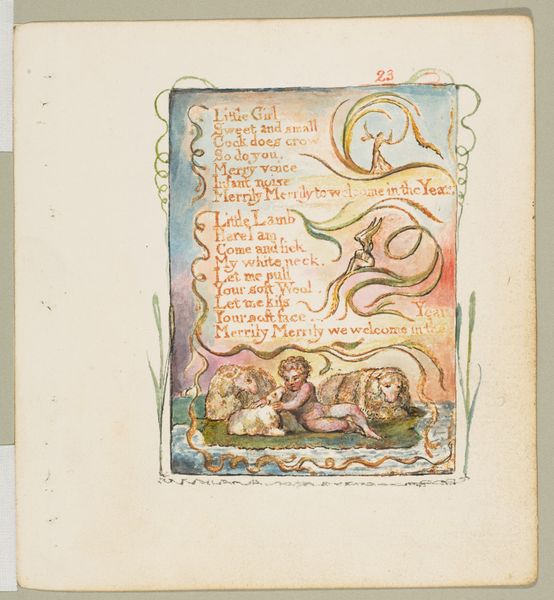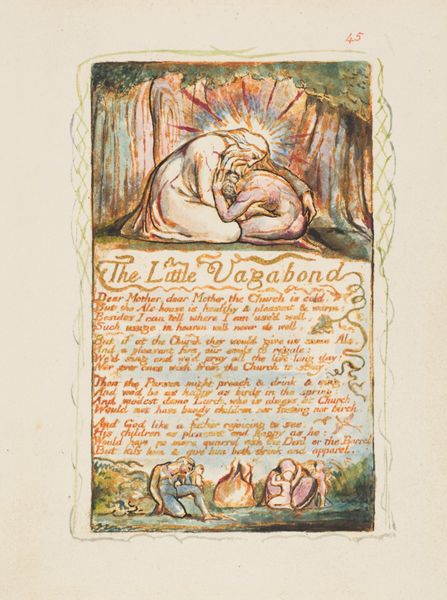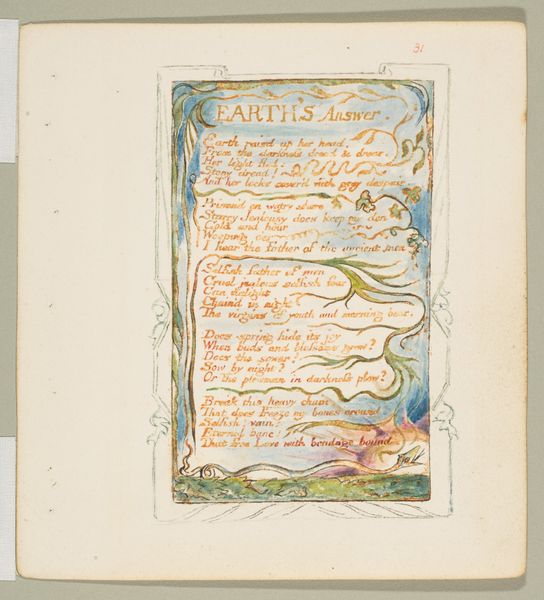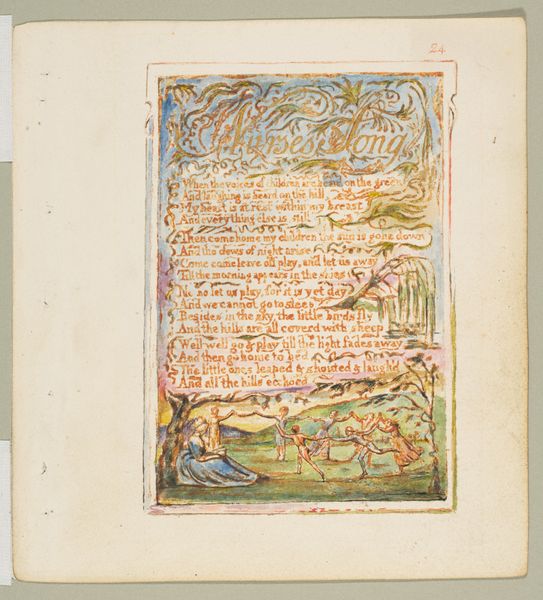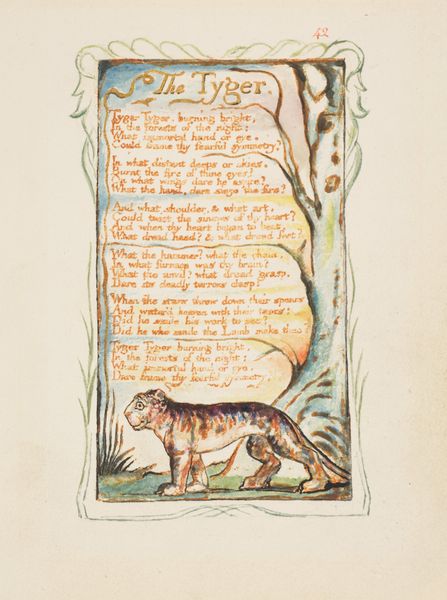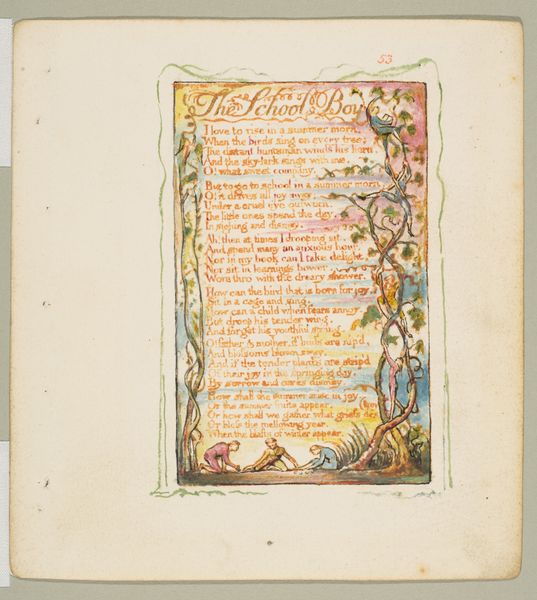
Dimensions: sheet: 6 3/16 x 5 9/16 in. (15.7 x 14.1 cm)
Copyright: Public Domain
Curator: This is William Blake’s “Songs of Experience: The Little Girl Lost,” created sometime between 1789 and 1825. It's currently held at the Metropolitan Museum of Art. The artwork combines printmaking with ink and watercolor on paper, as was typical of his illuminated books. Editor: It has such a dreamlike quality, doesn't it? The soft washes of color give it an ethereal feel, but there’s also something unsettling about it. The figures look vulnerable against this…what is it, a forest? A cave? Curator: Blake's art consistently critiques societal norms and power dynamics. This work is no exception. It originates from his “Songs of Innocence and Experience,” and the poem embedded here, together with the image, engages with themes of lost innocence, the dangers faced by young girls, and the complex relationship between the natural and the social world. We must remember his radical views against institutions and their controlling power, in order to really grasp this artwork's essence. Editor: So, this isn't just a sweet scene of childhood. There's a darkness there. What do you think the embracing figures in the foreground represent, especially within the context of the "desert wild" mentioned in the verse? It looks almost like an abduction or escape... or perhaps some forbidden solace. Curator: Given Blake's wider body of work, there is a reading of this image as a protest against restrictive societal constraints regarding sexuality and freedom. The “desert wild” becomes the space where these constraints are broken down, allowing for alternative forms of being. The image and verse disrupt simplistic notions of innocence, drawing us to question the ethical frameworks and power dynamics at play within his society – even today, those remain relevant. Editor: I am struck, now, by the deliberate contrast between the free-flowing lines of the illustration and the rigid structure of the printed poem. Perhaps Blake means to showcase a kind of negotiation or even an overt confrontation of language and expression within societal constructs. It certainly gives one pause, especially when reading some of the darker thematic undertones into that coupling in the artwork. Curator: Blake provides us with so much in the way of intersectional analyses – it almost feels like he was decades ahead of current academic pursuits. Editor: Absolutely. It really does speak volumes about how relevant historical artworks still are to today's world. Thanks for sharing your insights!
Comments
No comments
Be the first to comment and join the conversation on the ultimate creative platform.
